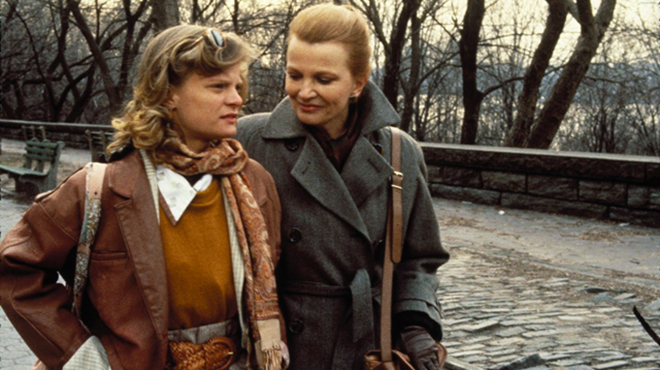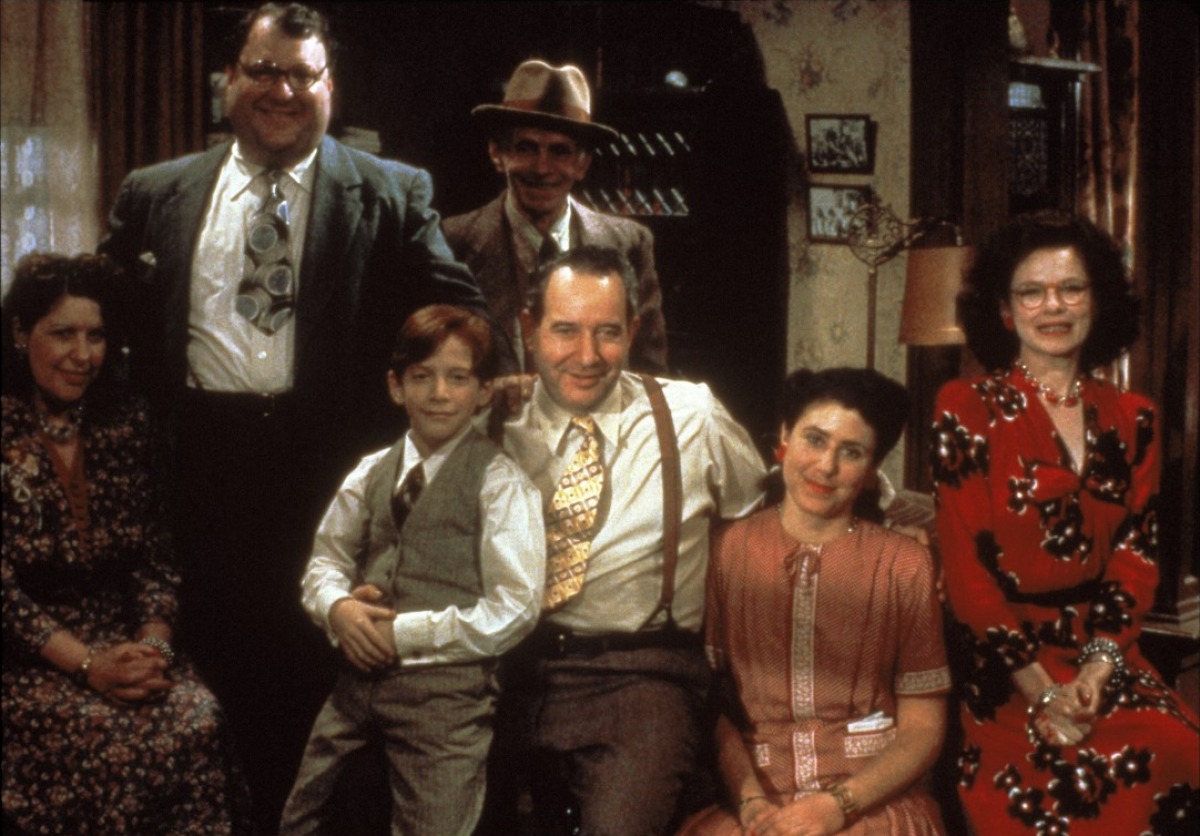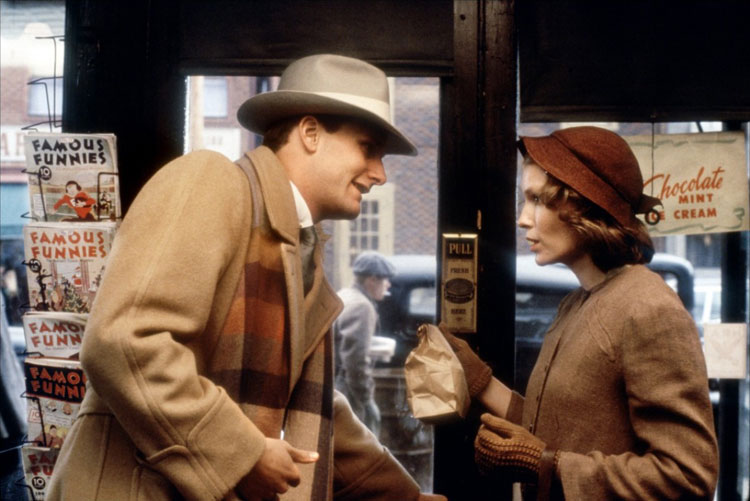
Every era of Woody Allen’s long and winding career as a filmmaker is varied and eclectic, and the 1980s, which might be dubbed his mid-period, is perhaps the most diverse of all. From sex comedies to madcap farces, theological dramas to mockumentaries, this was indeed a rich and highly creative decade for Woody Allen as writer and director. For Woody devotees, the 1980s could contain more masterpieces than any other decade, and even part time Woody fans might have to admit there are more genuine classics here than even in the glorious 1970s.
In such a rich period, it is indeed very difficult to pick out any film that isn’t at least very good. That said, there are films here that one would rank above others without taking anything away from the so called “lesser” works. Below then, is a list of all Woody’s directorial films from the 1980s, arranged from Worst to Best.
11. September (1987)

Straight from 1987’s Radio Days, Woody took himself in a completely different direction, staying behind the camera for a tense drama based on Chekhov’s Uncle Vanya. September stars Mia Farrow as Lane, who winds up in a complex love triangle involving Howard (Denholm Elliot), Stephanie (Diane Wiest) and Peter (Sam Waterson). Lacking in any direct humour, it’s a character piece with the performances centre stage, and is wonderfully conducted with masterful control by Woody.
The weird thing about September is the fact that Woody actually filmed it once with a different cast, scrapped it, and then re-filmed it from scratch. Christopher Walken had shot scenes in Sam Waterson’s role, but Woody said it didn’t feel right, and Charles Durning had been in place of Denholm Elliot. One can imagine a very different film, but the idea of Durning in the Elliot role seems impossible. In retrospect, Woody was probably deadly right in his decision to re-film it.
Allen had clearly tired of light material at this point, because September started a new phase of heavy dramatic movies that challenged his audience. The bubbly appeal of Diane Keaton had once been at the centre of his universe, now it was the colder yet still effective presence of Mia Farrow as his muse, time after time, and only she was able to carry the heavy weight of pictures like September. In many ways, the Woody/Mia collaborative years are as much Mia’s show as they are Woody’s. September is not my personal favourite Allen flick – nor does it seem to be anyone else’s for that matter – but it is an admirable drama, like Interiors for instance, very well acted and pieced together.
10. Another Woman (1988)

Allen gets heavy with his ultimate Ingmar Bergman tribute, Another Woman, which is undoubtedly one of his heaviest dramas. Gena Rowlands takes the lead role of Marion, a philosophy professor leaving work to write a book. Renting out a flat for some quiet time while construction work makes her home unsuitable for writing, she overhears a woman called Hope (Mia Farrow) being analysed by a therapist. The woman’s words – about her emptiness and phoniness – ignite something within Marion, who realises she too has been misguided in life and that many parts of her complacent existence are nothing but a lie, including her marriage.
Another Woman is a mid-life crisis movie, pure and simply so, and it’s a picture I am sure many people in the midst of change can relate to. Rowland’s character is fifty (Woody was in his early fifties at this stage) and has clearly stopped to reassess her life and where she went wrong. It’s a valid subject. After all, just how many people, in the real world, have done the same thing?
Often totally overlooked, it boasts a fine supporting cast, which includes Harris Yulin and Gene Hackman.
9. Radio Days (1987)

A key section in the classic book, Woody Allen On Woody Allen, is when Stig Bjorkman asks Woody if Radio Days was based on his own life during the golden era of radio. “Some things are very close and some are not,” Woody says, before reeling off a huge list of similarities that lasts almost a full page. Some of these things include the Communist neighbours, the name of the Hebrew School, the love doomed auntie, the house right by the water and the busyness of the household itself. “All these things occurred,” Woody ends it with. It reminds one of the “What have the Romans ever done for us?” scene in Monty Python’s Life of Brian.
One can see why Woody didn’t admit that the film was totally autobiographical, as it’s not only a good defence against the press who wish to probe his every thought, it’s also a fine method of keeping things private in a mode of expression that encourages self exposition and confession.
Woody narrates the picture, an ensemble piece which looks at the life of a regular American family. Seth Green plays the young Joe, who re-enacts Woody’s anecdotal adventures wonderfully. There are numerous tales coming and going in the loose structure, and key roles are played by the brilliant Diane Wiest, Jeff Daniels and Larry David (who would go on to collaborate with Allen again, on New York Stories and Whatever Works). The film also features both Mia Farrow and Diane Keaton in a minor cameo, the latter very much missed from the whole of Woody’s 1980s canon.
Radio Days was Allen’s biggest budget and most elaborate production up to that date – the budget was 16 million, but one can see where the money went. Meticulous detail has gone into capturing the era; from the costumes, to the sets and the music, we feel slap bang in the middle of late 30s, early 40s Queens.
The film received a lot of major film award nominations – Woody’s screenplay for instance was given an Oscar nod, though if there were any justice he would have won – and it was widely acclaimed the world over. Novelistic in its free form approach to character and sub plot development, it’s a film that washes over you and can be enjoyed time and time again.
8. The Purple Rose of Cairo (1985)

In many ways, the 1980s were a true golden age for Woody. Each new picture was totally different from the last, and he was seemingly coming up with fresh new ideas no one had tried or even dreamed up before. After all, in quick succession, he’d just done a “personal” study of a self doubting filmmaker, a sex comedy set in the country, a mockumentary about a shape shifting odd ball, and an all out comedy about a bumbling showbiz agent on the run from the mob, Then, in 1985, comes a movie where a woman falls in love with a cinema star from the golden age, who literally comes off of the screen and into her life. Woody Allen, nearing fifty at this point, had more imagination and energy than a man half his age.
The Purple Rose of Cairo could be looked upon as a tribute to classic cinema – after all, Woody was bewitched by the movies as a young boy, and this film is set in the year he was born – but there is a deeper thread running through this than you would first imagine. Many films of Woody’s explore the blurring lines between fantasy and reality, the sad fact that living in fantasy for good leads to madness, and the harsh reminder that apparently we all need to wake up and get into the dark, stark cold real world. Purple Rose explores this deeper. Mia Farrow plays Cecilia, the waitress in Depression era New Jersey, falling for the hero in a movie, Archaeologist Tom Baxter (played brilliantly by Jeff Daniels in one of his finest roles).
There is a genuine touching spark between the two and their romance is acted out beautifully, although always with an air of wistful sadness. The fact that Tom notices her in her repeated joyful viewings of the movie, steps out of the screen and into her life, makes the film’s message quite blatant. But this really doesn’t matter. After all, much of Woody’s metaphorical subtext is clear as day and obvious. It is refreshing that they are not hidden beneath pretentious imagery, presented to us with bare honesty. This is no exception.
7. A Midsummer Night’s Sex Comedy (1982)

After the heavy reception and critical hammering Stardust Memories received, Woody decided to lighten things up with his next picture, a breezy comedy and the first he made with his partner, Mia Farrow. Based on Bergman’s Smiles of a Summer Night, it’s a minor comedic work, and one that Allen tends to sideline a little as merely a bit of fun.
It was filmed at a custom built house in Pocantico Hills, and for the first time he set one of his movies in the countryside, a place Woody never really liked to visit much, with him being such a city person. Mia was of course the opposite and she had her own retreat country home which Allen rarely went to. “As a gesture of affection to her, I made a picture that embraces the country,” Allen said. “It’s meant to be beautiful.” And beautiful it certainly is, with the vibrant colours shining, glinting even, off of the screen.
Though his follow up was already written, the complex and brilliant Zelig, Allen quickly wrote the script for Midsummer Night’s Sex Comedy and decided to make it fast as a kind of break. In Woody Allen On Woody Allen, he states bluntly that he is under no allusion that this a great film. That said, it has its charms and many Woody die hards see it as an underrated gem.